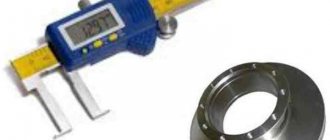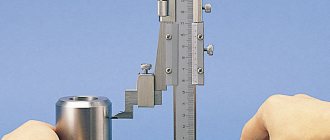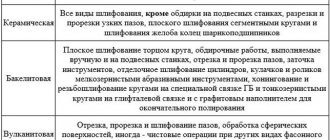- Design and elements of the drive roller chain
- Roller chain standards: GOST, ANSI, ISO, DIN
- Drive roller chain dimensions (parameters)
- Marking of drive roller chains (designation)
- Drive Roller Chain Size Chart
- Comparison table of roller chain standards by size
marking of drive chains, dimensions of drive chains table, table of drive chains, table of roller drive chains, standard sizes of drive chains, drive chain designs, sizes of roller chains, roller chain pitches, roller drive chains single-row sizes, table of roller chains, roller drive chain pitch, designations roller chains, roller chain elements, roller chain parameters, roller chain markings, roller chain size table
In the era of subsistence farming, all products were produced for personal consumption, and surplus production could be exchanged for missing products. Living conditions in certain natural conditions, skills and experience contributed to the specialization of labor. Factories subsequently followed a similar path: they used their own parts for their own production of machines and equipment. For example, each manufacturer had its own drive chain sizes Further development of the industry continued the trend towards specialization and standardization, including roller chains.
Preface
1 DEVELOPED by the All-Russian Research Institute of Standardization and Certification in Mechanical Engineering of the State Standard of Russia and the Research Institute of Coal Engineering
INTRODUCED by Gosstandart of Russia
2 ADOPTED by the Interstate Council for Standardization, Metrology and Certification (Protocol No. 11-97 of April 25, 1997)
The following voted for adoption:
| State name | Name of the national standardization body |
| The Republic of Azerbaijan | Azgosstandart |
| Republic of Armenia | Armgosstandard |
| Republic of Belarus | State Standard of Belarus |
| The Republic of Kazakhstan | Gosstandart of the Republic of Kazakhstan |
| Kyrgyz Republic | Kyrgyzstandard |
| The Republic of Moldova | Moldovastandard |
| Russian Federation | Gosstandart of Russia |
| The Republic of Tajikistan | Tajikgosstandart |
| Turkmenistan | Main State Inspectorate of Turkmenistan |
| The Republic of Uzbekistan | Uzgosstandart |
| Ukraine | State Standard of Ukraine |
3 This standard represents the complete authentic text of ISO 606-94 “Short pitch precision roller drive chains” and contains additional requirements reflecting the needs of the country's economy
4 By Decree of the State Committee of the Russian Federation for Standardization and Metrology dated November 17, 1999 No. 407-st, the interstate standard GOST 13568-97 (ISO 606-94) was put into effect directly as a state standard of the Russian Federation from July 1, 2000.
5 INSTEAD GOST 13568-75
GOST 13568-97 (ISO 606-94)
INTERSTATE STANDARD
ROLLER AND BUSH DRIVE CHAINS
General
technical conditions
Driving roller and bush chains. General specifications
Date of introduction 2000-07-01
Single-row and double-row drive roller chains: design features
Roller chains consist of a sequence of alternating links (internal + external). They are selected in such a way as to ensure smooth operation of the gear drive. To connect individual elements, a connecting link with a spring lock or a transition link is used. It can be single or double.
The key parts in the design of roller drive chains are the outer and inner links. A steel pin is used to connect them to each other, as well as to connect individual links. The sliding of the chain links is ensured by a bushing with a roller.
Drive roller chains are produced in single-row and multi-row versions. The number of rows can be from 2 to 5; the greater their number, the higher the load the chain can withstand. The most popular and frequently used are single- and double-row chains. Alloy or carbon steel is used for their production, which guarantees them high reliability and long service life.
Single-row chains are used in working mechanisms to transmit torque or change the rotation speed of mechanisms of industrial equipment or agricultural machinery. Structurally, a single-row chain consists of a sequence of internal and external links connected into a chain by a transition or connecting link.
Structurally, double-row chains differ from single-row chains in that they consist of two rows of links connected by an elongated steel pin. Thanks to this design, it was possible to obtain a number of advantages compared to single-row chains:
- increased efficiency due to reduced friction;
- ability to operate at a speed of about 30 m/sec;
- Possibility of use at operating temperatures up to +300°C;
- increased resistance to mechanical loads.
The key difference between double-row chains and single-row chains is the ability to operate at higher loads and increased service life. Double-row chains are widely used in heavy industrial installations, where it is necessary to transmit large forces, and in oil equipment.
Standards
In order to standardize parameters, different countries have developed their own Standards that regulate the dimensional data and characteristics of all existing chains and sprockets used with them. Due to the fact that there is no generally accepted Standard, and equipment and technical means are widely imported, certain difficulties arise associated with the selection of chains of the required caliber.
Popular:
- GOST 13 568-97 – state standardization of the Russian Federation, valid in the CIS countries;
- ISO 606, DIN 8187 (8188) - used in Western European countries;
- ANSI B1M is the American version of standardization.
Any of the given examples describes types, dimensional information and technical parameters, primary values for pitch selection, grades of steel alloys, and numerous other information. But the main one continues to be the determination of the dimensional characteristics of chains and their coincidence with the data of various Standards.
Due to the fact that the first standardization of chains was developed in the inch system version, some parameters correspond to inch fractions, after which they are converted to the generally accepted metric system and written in millimeter fractions of a centimeter.
Foreign analogues of designations and sizes
In addition to the GOST marking, an abbreviation in accordance with the European standard ISO606 (DIN8187, BS) and the American standard ANSIB29.1M can be used to designate roller chains.
Chain marking according to ISO606 (DIN8187, BS) standard
Drive roller chains manufactured according to ISO606, DIN8187, BS228 standards have chain pitch ranging from 6 to 114.3 mm. These chains are characterized by the presence of an increased diameter of the connecting pin. This increases the contact surface area and increases the wear resistance of the chains.
The size designation for single-row and multi-row drive roller chains includes three characters - the first indicates the number of 16ths of 1 inch, the second indicates the series or standard, and the third the number of rows in the chain.
For example, 12V-2.
- 12 is 12/16 of 1 inch;
- B - indicates the B series of the ISO606 standard (DIN8187, BS228);
- 2 - means that the chain is 2-row
Circuit marking according to ANSI B29.1M standard
These chains are manufactured in accordance with the technical requirements of ISO606, ANSIB29.1M, DIN8187 standards. These products have chain pitches ranging from 0.25 to 3 inches. Their difference from European chains is the smaller diameter of the pin than their European counterparts. As a result, the wear resistance and service life of ANSI chains is reduced. The exception is a 5/8" pitch chain - it has a larger pin and bushing diameter than a similar BS/ISO chain.
The dimensions of the drive double row roller chains are marked according to the technical requirements of the ANSI system. The marking has three elements: the first of them is a number indicating 1/8 of one inch, the second element indicates the type of chain (0 - with a roller, 5 - with a bushing), the third indicates the number of rows.
For example, 60-2
- 6 is 6/8 of an inch, in millimeters it will be 19.05;
- 0 - indicates the type of chain - roller;
- 2 - indicates that there are two rows in the chain.
The table shows examples of foreign single-row drive roller chains, the dimensions of which correspond to domestic analogues:
| BS/ISO designation European standard | ANSI designation American standard | Designation according to GOST 13568-97 |
| 06B-1 | PR9.525-9.1 | |
| 08B-1 | PR12.7-18.2 | |
| 10B-1 | PR15.875-23 | |
| 60-1 | PR19.05-31.8 | |
| 80-1 | PR25.4-60 |
Types of bicycle chains
All bicycle chains are divided into 2 main types, each of which has its own characteristics.
- Roller (wear-resistant, rare type). Feature: the rollers are located inside the links.
- Bushing (common type not for professional use). Feature: ordinary bushings are used to connect the links.
Of the many modifications, 4 subspecies are distinguished.
- Used in single speed bicycles.
The simplest type is installed on children's, urban, and teenage models with a single-speed hub on the rear wheel. Made from high quality steel, the plates are thick and durable and won't bend or wear out. Durability is ensured by a straight chain, which avoids stress during transverse curvature.
Multi-speed bikes. Main features of bicycle chains:
- the presence of a recess that accepts the bend of the chain;
- thin plates and narrow sprockets;
- uneven load.
When changing gears, the chain jumps over the sprockets, which causes misalignment. This causes the sprockets to wear out and the transmission element to wear out.
Lightweight chains Empty bushings with holes in the plates can be installed on any bicycle. Most often, chains, which are 25% lighter than their analogues, are installed on racing bikes. Due to the nature of operation, the chain quickly stretches and fails.
- Half-link
Dimensions and designations according to GOST 13568-97
According to the GOST 1356-97 standard, roller single and multi-row drive chains are produced. They are used as part of mechanical transmissions of various machines and equipment, except for drilling rigs.
The important dimensions of GOST single-row drive roller chains are:
- step size;
- diameter (roller, roller);
- distance between inner plates;
- value of the width of the inner plate;
- maximum permissible breaking load in kN/kgf.
The table shows the values of the listed parameters for the main circuits, which are produced in accordance with the requirements of the GOST standard. Table 1 corresponds to chains in a single-row design, and table 2 for a double-row design.
Table No. 1. Designations and dimensions of single-row roller drive chains
| Chain name | Pitch, mm | Diameter, mm (roller) | Distance between internal plates, mm | Diameter, mm (roller) | Length, mm (roller) | Inner plate width, mm | Ultimate breaking load, kgf |
| PR-8-4.6 | 8 | 5 | 3 | 2.31 | 12 | 7.5 | 4.6/460 |
| PR-9.525-9.1 | 9.525 | 6.35 | 5.72 | 3.28 | 17 | 8.5 | 9.1/910 |
| PR-12.7-10-1 | 12.7 | 7.75 | 2.4 | 3.66 | 10.5 | 10 | 10.0/1000 |
| PR-12.7-9 | 12.7 | 7.75 | 3.3 | 3.66 | 12 | 10 | 9.0/900 |
| PR-12.7-18.2-1 | 12.7 | 8.51 | 5.4 | 4.45 | 19 | 11.8 | 18.2/1820 |
| PR-12.7-18.2 | 12.7 | 8.51 | 7.75 | 4.45 | 21 | 11.8 | 18.2/1820 |
| PR-15.875-23-1 | 15.875 | 10.16 | 6.48 | 5.08 | 20 | 14.8 | 23.0/2300 |
| PR-15.875-23 | 15.875 | 10.16 | 9.65 | 5.08 | 24 | 14.8 | 23.0/2300 |
| PR-19.05-31.8 | 19.05 | 11.91 | 12.7 | 5.94 | 33 | 18.2 | 31.8/3180 |
| PR-25.4-60 | 25.4 | 15.88 | 15.88 | 7.92 | 39 | 24.2 | 60.0/6000 |
| PR-31.75-89 | 31.75 | 19.05 | 19.05 | 9.53 | 46 | 30.2 | 89.0/8900 |
| PR-38.1-127 | 38.1 | 22.23 | 25.4 | 11.1 | 58 | 36.2 | 127.0/12700 |
| PR-44.45-172.4 | 44.45 | 25.4 | 25.4 | 12.7 | 62 | 42.4 | 172.4/17240 |
| PR-50.8-227 | 50.8 | 28.58 | 31.75 | 14.27 | 72 | 48.3 | 227.0/22700 |
| PR-63.5-354 | 63.5 | 39.68 | 38.1 | 19.84 | 89 | 60.4 | 354.0/35400 |
| PR-103.2-650 | 103.2 | 46 | 49 | 24 | 124 | 65 | 650.0/65000 |
Example notation:
To denote brief technical characteristics of circuits, a special abbreviation consisting of letters and numbers is used. Let's look at an example of what the alphanumeric indices mean in the designation of drive roller chains.
For example, PR-12.7-900-2
- PR - indicates that this is a single-row drive-roller chain;
- 12.7 - chain pitch in millimeters;
- 900 — value of breaking load in kgf;
- 2 - index indicates the execution of the circuit.
In the process of repairing and servicing chains, you will need to purchase their components. They also have their own markings. For a single-row chain, its component elements are designated as follows:
- SPR-12.7-900-2 - connecting type link;
- PPR-12.7-900-2 - transition type link;
- P2PR-12.7-900-2 - double transition link.
Table No. 2. Designations and dimensions of double-row roller drive chains
| Chain name | Pitch, mm | Diameter, mm (roller) | Distance between internal plates, mm | Diameter, mm (roller) | Length, mm (roller) | Inner plate width, mm | Ultimate breaking load, kgf |
| 2PR-12.7-31.8 | 12.7 | 8.51 | 7.75 | 4.45 | 35.0 | 11.8 | 31.8/3180 |
| 2PR-15.875-45.4 | 15.875 | 10.16 | 9.65 | 5.08 | 41.0 | 14.8 | 45.4/4540 |
| 2PR-19.05-64 | 19.05 | 11.91 | 12.7 | 5.94 | 53.4 | 18.2 | 64.0/6400 |
| 2PR-25.4-114 | 25.4 | 15.88 | 15.88 | 7.92 | 68.0 | 24.2 | 114.0/11400 |
| 2PR-31.75-177 | 31.75 | 19.05 | 19.05 | 9.53 | 82.0 | 30.2 | 177.0/17700 |
| 2PR-38.1-254 | 38.1 | 22.23 | 25.4 | 11.1 | 104.0 | 36.2 | 254.0/25400 |
| 2PR-44.45-344 | 44.45 | 25.4 | 25.4 | 12.7 | 110.0 | 48.87 | 14.40 |
| 2PR-50.8-453.6 | 50.8 | 28.58 | 31.75 | 14.27 | 130.0 | 48.3 | 453.6/45360 |
For example, 2PR-15.875-4540
- 2PR - indicates that this is a 2-row drive roller chain;
- 15.875 — chain pitch value in mm;
- 4540 - the value of the breaking load in kgf.
For these chains, their component elements are marked in the same way as for single-row ones. To designate components, use the following marking scheme:
- S-2PR-15.875-4540 - connecting type link;
- P-2PR-15.875-4540 - transition type link;
- P2-2PR-15.875-4540 - double transition link.
How to choose a drive roller chain?
When servicing and repairing equipment, the drive chain has to be replaced. To choose the right one, you need to consider several important factors:
- number of chain rows;
- its row;
- the magnitude of the breaking load.
The listed drive roller chain dimensions can be found in the tables of the current standards. The table above provides information on the interchangeability of chains produced according to various standards. Thanks to this, in many cases it is possible to install chains from both European, domestic or American manufacturers in the drive transmission mechanism.








